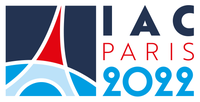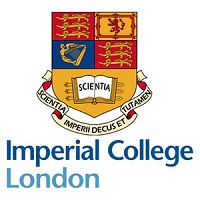›From PPE to Spacesuit: Ecology and Evolution of Clothing as a System (1/4) -
⌚ 14:00 BST
Since PPEs like disposable masks and gloves is becoming part of everyday life in the UK, such garments are seen lying around on the roads, in the parks and in bodies of water in London. PPEs are made as disposables to manage the risk of contamination. Spacesuits, especially EVA suits, are a strange kind of disposable, once they are sent up to space, they are reused and upcycled as much as possible. The environment in which PPEs and spacesuit are donned is often well defined. On Earth and in space, such garments are designed to be donned with airlocks and gowning procedures to ensure the risk of contamination is managed systematically. Will modular design and design for easy-cleaning change the landscape of these disposables? What else happens in the operation environments to support the successful use of such garments?
Join us for 1 hour of inspiration and deep insights online - on Zoom or Youtube. Our exciting line up of panelists will present their ideas and have a panelists discussion linking to moderated Q&A with your input. They are:
1. Astronaut Richard Linnehan, from NASA Johnson Space Center
Dr. Richard M. Linnehan was selected as an astronaut in 1992. The Massachusetts native has a Bachelor of Science from the University of New Hampshire, a Doctorate of Veterinary Medicine from The Ohio State University and a Master of Public Administration from the Harvard Kennedy School of Government. He flew aboard STS-78, STS-90, STS-109 and STS-123. STS-78 delivered the Life Sciences and Microgravity Spacelab combining microgravity studies and life sciences. STS-90 was a Spacelab mission where 26 experiments were performed. STS-109 was the fourth Hubble Space Telescope servicing mission. STS-123 delivered the Japanese Experiment Logistics Module - Pressurized Section. Dr. Linnehan currently splits his time between the Astronaut Office Exploration and Integration branches and the NASA Institutional Review Board (IRB) and JSC Institutional Animal Care and Use Committee (IACUC).
2. Daniel J Klopp, from ILC Dover Inc, NASA’s spacesuit (xEMU) maker
Dan holds a Bachelor of Science degree in Physics, Chemistry and Mathematics, along with an MBA degree with a concentration in Marketing. He spent the first 18 years of his professional career working for Hewlett Packard Company in a variety of roles with different product lines. After working for several other corporations, Dan joined ILC Dover in the role of Director of Product Marketing with responsibility for ILC Dover’s Space Systems Division and Respiratory Personal Protective Equipment Division (along with several other product lines).
Dan is helping ILC Dover prepare for future human space exploration in low earth orbit and beyond, as well as helping improve the protection of healthcare workers and others working in hazardous environments here on earth.
3. Julia Duncan from Monmouth Scientific, a clean room solutions provider
Julia is enthralled by the vast unknowns of the ocean and space. She holds a bachelor’s degree in social science and a postgraduate degree in marketing management. She joined Monmouth Scientific in 2018 as a technical sales specialist. Her role allows her to focus on what makes people tick when exploring new territories. Specifically, she implements product and service offerings for clean air solutions for aerospace, marine life, artwork conservation, data centres, the military, medical labs, research laboratories, etc. Creating a great service offering is particularly rewarding as it requires understanding the need of the end-users, knowledge of the fundamental principals in creating clean environments and the ability to negotiate and bridge the gap between users, engineers and principles of clean environments. Julia is presently focused on Monmouth’s work in assisting the COVID research teams in supplying Class II Micro Biological Safety Cabinets and helping PPE manufacturers set up approved manufacturing facilities.
Moderation
The event will be chaired by Stephanie Pau from The Hamlyn Center, Imperial College London, the producer of this series. Get in touch if it sparks new ideas for collaboration! stephanie.pau@imperial.ac.uk. It is co-facilitated by Ann Swift and Caroline Stuart from the University of Surrey.
The series is funded by FAIR-SPACE hub (Future of AI and Robotics for Space). The production is created in conjunction with the theme on Human-Robot Interaction, for the future of Space.
We can only have 100 people in the zoom session, we will admit people on a first come first served basis until the room is full. For those who we could not get into zoom, we also provide a YouTube link. With the ticket, you will have information on both links. The difference is: on Zoom, we would do our best to bring in questions asked to a moderated panel discussion and welcome you to chat with each other; on Youtube, we make no promise. This Eventbrite entry will be updated to provide online details closer to date.
Don't forget to sign up to this mailing list to get posted on all the other future events in this series: http://eepurl.com/ggr0GP
Tweets by spaceagendaTrack this event on your Apple calendar














 Online
Online